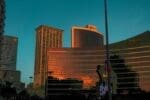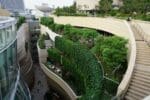The idea of buying a property for the price of a cup of coffee, popularized by initiatives in Italy, ignites the imagination of thousands of adventurers and bargain hunters. Lately, there has been increasing talk of similar schemes in Spain. But what are the programs for houses for 1 euro in Spain really about? While the headline-grabbing 1-euro house is more of a powerful marketing tool than a widespread reality, it has successfully illuminated a much broader and more tangible landscape of opportunities. In 2025, the conversation has evolved from a simple myth into a diverse ecosystem of initiatives designed to rejuvenate rural Spain, offering everything from heavily discounted homes to direct financial subsidies and even salaried jobs. This guide will deconstruct the myth and reveal the real, actionable opportunities available today.
Content
The “España Vaciada” (Empty Spain) Phenomenon
To understand why such offers exist, we need to get acquainted with the term España Vaciada, or “Empty Spain.” This is a socio-economic phenomenon describing the mass depopulation of vast parts of the country’s interior. Provinces like Teruel, Soria, Zamora, and many others have been losing their population for decades, as young people move to big cities and coastal areas in search of jobs and a better life. As a result, hundreds of picturesque villages are left with empty or dilapidated houses, and local municipalities are fighting for their survival. In fact, 53% of Spanish municipalities have fewer than 500 inhabitants, and a staggering 90% of them are at risk of demographic extinction. It is in this context that initiatives to attract new residents are born, supported by significant government action like the €10 billion “Recovery, Transformation and Resilience Plan” aimed at tackling depopulation. Unlike in Italy, Spain does not have a single national program, but rather individual projects by separate municipalities.
Deconstructing the 1-Euro Myth: The Real Commitments
Although the 1-euro offer sounds appealing, it is just the tip of the iceberg. The process is less of a standard property transaction and more of a social contract tied to strict commitments aimed at ensuring the buyer will genuinely contribute to the community’s revival.
Main Conditions and Requirements:
- Renovation Obligation: This is the core of the deal. The buyer commits to submitting a detailed renovation project, often within a tight timeframe of 2 to 12 months, and completing it within a few years.
- Financial Guarantee: Most municipalities require a deposit, which can range from €3,000 to €6,000 (a common figure in similar Italian schemes is €5,000). This amount serves as a guarantee that you will fulfill your renovation commitment and is refunded upon successful completion.
- Residency Commitment: Programs often require the buyer to register as a permanent resident (empadronarse) in the village and live there for a certain period, typically a minimum of 5 to 10 years.
- Covering All Costs: The 1-euro price is symbolic. The buyer is responsible for all actual transaction and renovation costs. The entire process of buying property in Spain involves additional fees that must be anticipated.
The Real Price Behind the Symbolic 1 Euro
Investing in a 1-euro house goes far beyond the nominal price. Here is a breakdown of the real costs you should anticipate:
- Acquisition Costs: These include notary fees, property transfer tax (ITP – Impuesto de Transmisiones Patrimoniales), which varies between 6% and 10% of the property’s assessed value, and registration fees. These costs can easily amount to several thousand euros.
- Renovation Costs: This is the largest expense. Most properties are in ruins—without a roof, plumbing, or electricity. A complete renovation, depending on the size and condition, can cost between €30,000 and over €100,000.
- Architectural and Project Costs: You will need a licensed local architect to prepare the renovation project and get it approved by the authorities.
- Utility Connection Costs: Fees for connecting to the electricity grid, water supply, and sewage system.
Beyond 1 Euro: 4 Real Ways to Move to Rural Spain in 2025
The real opportunity in Spain has evolved into a more pragmatic and diverse set of incentives. Municipalities now compete for new residents by offering tailored packages that go far beyond a derelict building. Here are the four main models you’ll find today:
| Incentive Model | Example Villages | Typical Offer Details | Best For |
| Discounted Property | Paymogo, Alpuente | Habitable houses starting from €17,000-€20,000 | Buyers seeking affordability without the pressure of urgent, large-scale renovations. |
| Direct Subsidy | Ponga | €3,000 per couple + an additional €3,000 per child born there | Families looking for a direct financial boost to help with relocation costs. |
| Subsidised Living | Rubiá, Griegos | Monthly stipends of €100-€150 or free/heavily discounted rent | Individuals and families wanting to significantly lower their cost of living from day one. |
| Salaried Position | Almadrones | A monthly salary of €1,100-€1,600 plus free housing and meals | Those seeking a complete lifestyle package with guaranteed income and zero housing costs. |
Destinations in the Spotlight & Your Relocation Toolkit
Navigating these opportunities requires knowing where to look and which tools to use. The initiatives are scattered throughout “Empty Spain,” with some of the most well-known examples in regions like Galicia, Castile and León, and Aragon.
Villages Offering a New Life in 2025:
- Alpuente, Valencia: This historic village offers the full package. With a population of just 670, it has houses starting from €20,000 for a furnished three-bedroom home and, crucially, up to 100 job openings in local agriculture and livestock farming that require no specific qualifications.
- Paymogo, Andalusia: For those wary of strict rules, Paymogo is an ideal entry point. It offers houses from just €17,000 with “no need to renovate within a short time frame or start specific activities by force”. The initiative is supported by the Holapueblo project, which helps new residents integrate and start businesses.
- Griegos, Aragón: A paradise for families. To keep its local school open, Griegos offers three months of free rent, followed by a monthly rent of just €225, which is reduced by €50 for every child of school age. The village also helps find jobs for new residents.
Platforms That Connect You to Your Village:
A new ecosystem of platforms has emerged to bridge the gap between cities and villages. These are essential resources:
- Holapueblo: This platform acts as a matchmaker, connecting entrepreneurs with a business idea to villages actively seeking new businesses and residents. It’s backed by major companies like Ikea and is focused on economic revitalisation.
- Proyecto Arraigo: This is a highly structured program that manages “life projects, not removals”. They work with serious, committed applicants who are carefully vetted to fit a specific, pre-identified need in a village. They explicitly state they do not provide free housing, jobs, or financial aid.
- Vente a Vivir a un Pueblo: This platform functions as the “largest showcase of villages in Spain,” acting as an information portal with listings for housing, jobs, and business transfers. It’s the best starting point for independent research.
Conclusion: Who is This Opportunity For? The Two Faces of the Spanish Property Market
It’s crucial to see these rural initiatives in the context of Spain’s wider property market. While villages in España Vaciada are offering incentives to attract people, Spain’s major coastal and urban markets are booming. Nationwide property prices rose by 9.6% in 2024, with hotspots like Alicante and Valencia seeing increases of over 19%. This has created a tale of two Spains: one with a dynamic, expensive, and high-demand property market, and another offering incredible affordability in exchange for commitment and a willingness to embrace a different way of life.
Buying a house for a symbolic price is not a get-rich-quick scheme or an easy way to acquire a holiday home. It is a serious, long-term project that aligns with key trends in property investments abroad and requires significant financial investment, patience, and personal involvement.
This opportunity is less suited for the classic investor and more for:
- Adventurers and enthusiasts who want to immerse themselves in the authentic rural life of Spain.
- People with experience in construction and renovation who can save on labor costs.
- Buyers looking for a lifestyle project, rather than just a financial investment.
- Families and remote workers seeking a lower cost of living, a strong sense of community, and a direct connection to nature.
Ultimately, the programs to revitalise rural Spain are real, but they are more of an invitation to invest in a community’s future than a standard real estate transaction.
You might also like:
- Climate-Resilient Property: The New Formula for Investment Success
- Partner or Just a Salesperson? The Complete Guide to Choosing a Real Estate Agent in Dubai (2025)
- Taxes on Selling Property in Greece: A Guide to Capital Gains Tax (2025)
This post is also available in: Български







